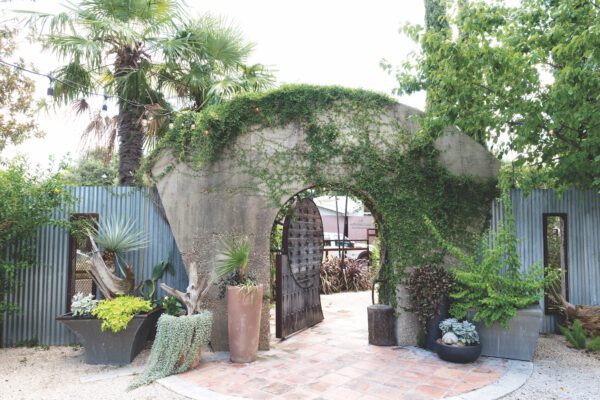Best Plants to Plant Locally

Native plants to celebrate spring in Austin
Words by Mallory Lehenbauer Photo By Will Bowling
At the Tillery Plant Company, they know plants. Melissa Hagen, House Plant Manager, shares her expertise on the six best plants to grow in East Austin.
Anacacho Orchid
This eye-catching understory tree is beautiful in the spring. It is easy to care for once it is established. Starting out as a big shrub, this native Texas plant can grow to be up to 12 feet tall. Its fragrant flowers attract butterflies and bees, and if trimmed, it can provide great shade. “These trees are just really striking,” Melissa exclaims. “I always get really excited when I see these in people’s yards.”
Redbud
Two kinds of redbud trees, Mexican Redbud or Texas Redbud, thrive in the Austin climate. These redbuds are also small understory trees which grow wild in Texas. They need minimal care and watering.“A redbud is the first thing you notice in the spring,” according to Melissa because they offer the perfect pop of pink color to any yard.
Pecan, Pomegranate & Fig Trees
It was too hard to pick just one tree that bears fruit (or nuts). Pecan trees are great for shade and are native to East Austin. But pecan trees can grow to be bigger than most yards can handle, which is why the pomegranate and fig trees are also a great choice. Pomegranate trees take longer to produce fruit, but if fig trees are planted now, most likely they will bear fruit by next year.
Pallo Verde or Ratama
This plant has a green trunk and beautiful yellow flowers. It’s easy and functional for yards requiring little water and love. It does especially well in a desert-like environment. Pallo Verdes are found growing all over Austin in rocky landscaping. Their nectar seeds are also a favorite of wildlife, bringing birds and other creatures to the yard.
Pineapple Guava
These plants are not native to Texas but have adapted well as they love full sun and thrive with little watering and care. They are a perfect small shrub, but “the best part is that the flowers taste like marshmallows,” Melissa shares. Their blooms are a bright pink and red color—making for a tasty and pretty accent in the spring.
Leopard Plant
Unlike the plants above, this plant does well in the shade. Melissa says, “These plants can survive the winter and still look great.” They can be planted in a pot or in the ground, they handle the winter well, and don’t need to be brought in for a freeze. The Leopard plant is an evergreen with big green leaves and will stay green throughout summer and winter.
Native Knowledge
Join the Tillery Plant Company for a variety of classes. Their classes cover house plants, urban vegetable gardening, medicinal plants, and more. Beyond classes, they also host public plant swaps. Visit their Facebook page for upcoming events: @Tillerystreetplantco
Contact:
801 Tillery Street
tillerystreetplantcompany.com
@tillerystplantco











